Audubon in the Anthropocene
Audubon in the Anthropocene highlights a portfolio of prints by contemporary artist Matthew Day Jackson titled There Will Come Soft Rains. In this portfolio, Jackson dramatically reworks a late edition of etchings from John James Audubon's iconic series The Birds of America. Each Audubon bird rests amidst potential apocalyptic settings interpreted by Jackson, often referencing final scenarios of the Anthropocene.
Scholars have proposed the ''Anthropocene'' as a term for our current geological period, characterized by the significance of human intervention in our ecosphere. Although the term has not been formally adopted by the geologic community, interest in and debate about the Anthropocene coincides with scholarly discussions concerning Earth, its life, and our collective future.
Audubon in the Anthropocene explores the intertwined relationship between birds and humans since the publication of The Birds of America in 1827, as well as what may become of these birds, humans, and Earth itself.
This virtual presentation of the exhibition includes short audio clips from Curator Kate Meyer, links to Audubon's original illustrations that inspired Jackson, related readings, and other interactive elements for you to explore.
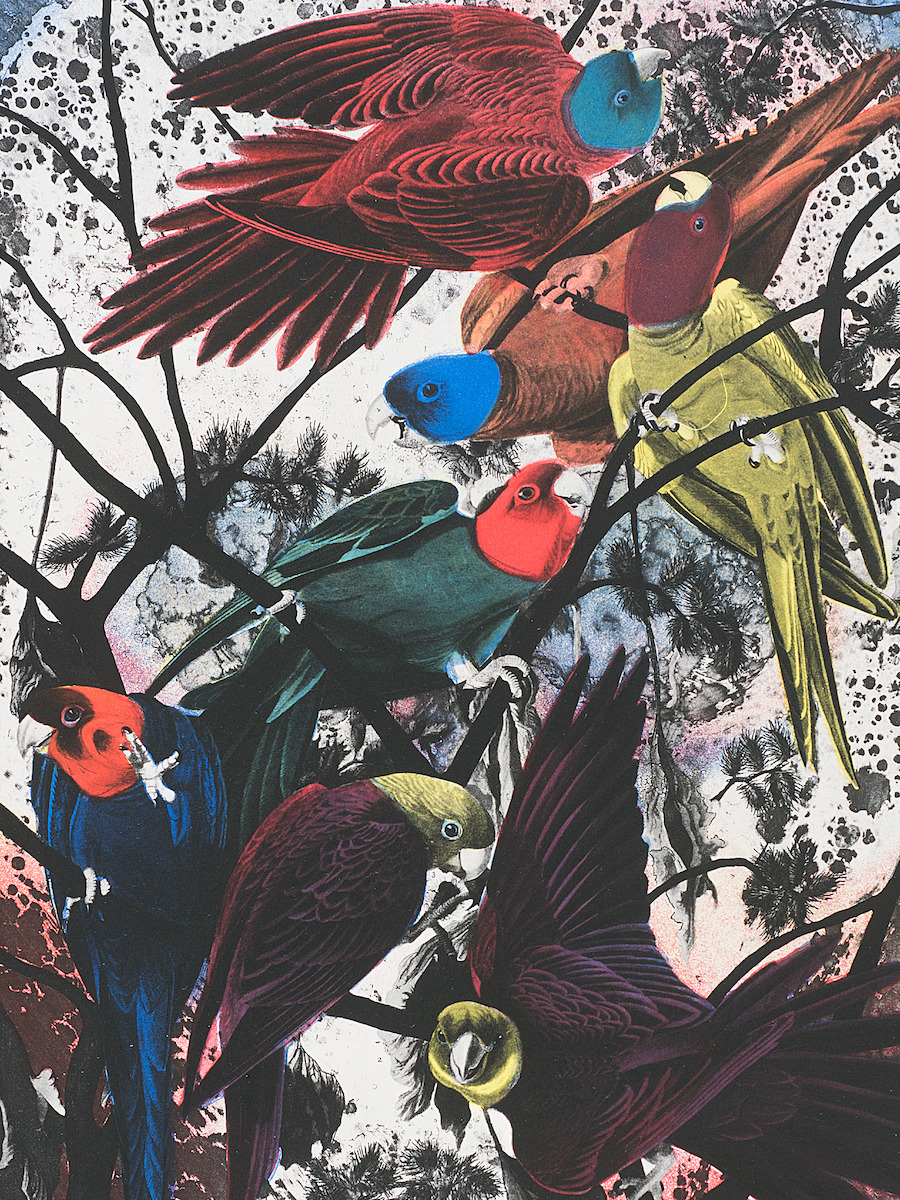


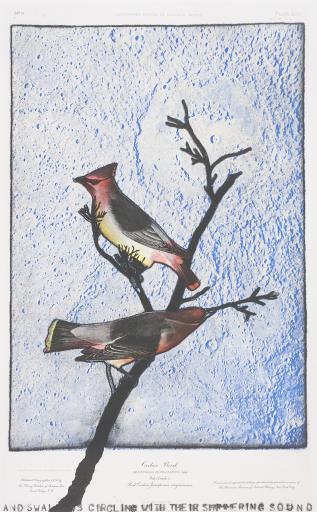

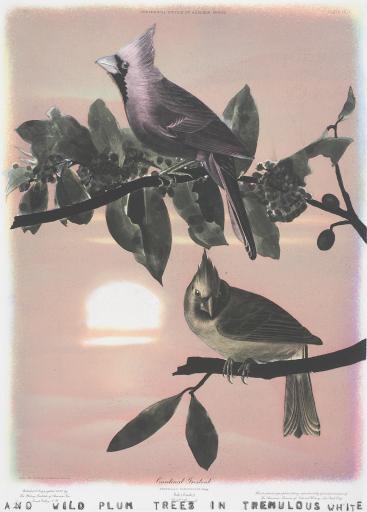
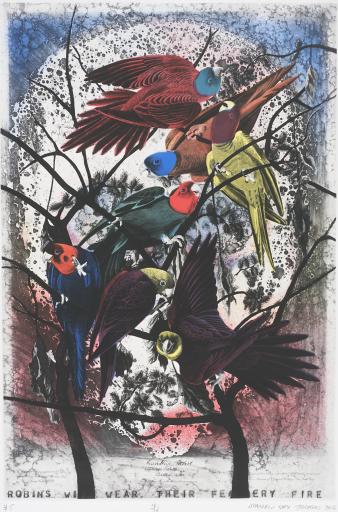
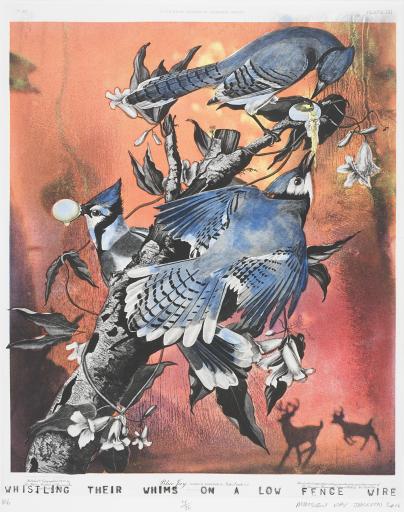
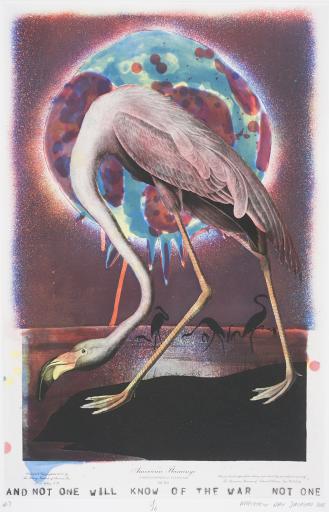

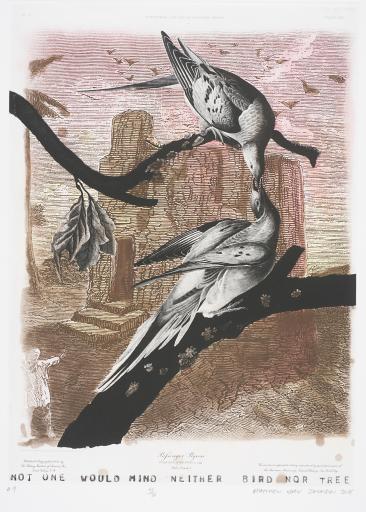
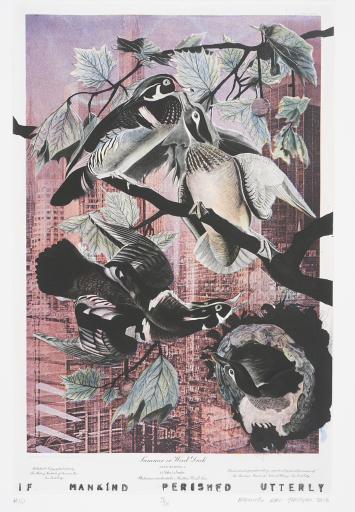
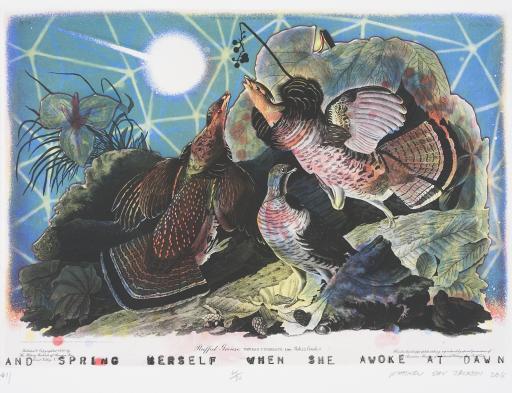
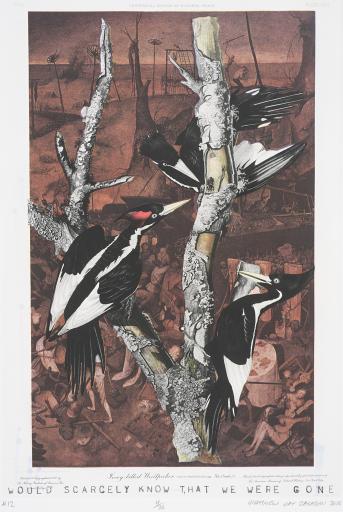
![John T. Bowen; John James Audubon, Cardinal Grosbeak, Fringilla cardinalis [Cardinalis cardinalis]](https://sma-search-api.ku.edu/ea4208842c08996bda056e641cd793b4b74066379b42086fda0a837d677233f8/EL2020.003.jpg)
![John T. Bowen; John James Audubon, Carolina Parrot, Psittacus carolinensis [Conuropsis carolinensis]](https://sma-search-api.ku.edu/ea4208842c08996bda056e641cd793b4b74066379b42086fda0a837d677233f8/EL2020.004.jpg)
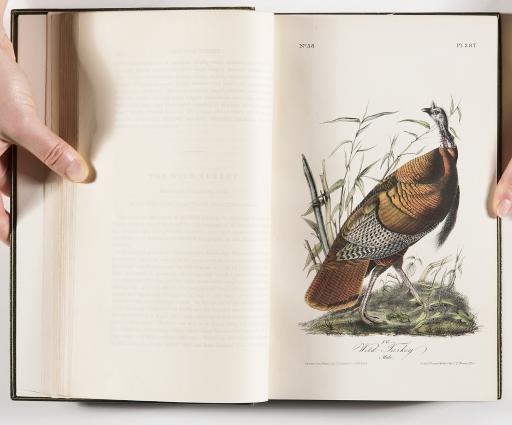
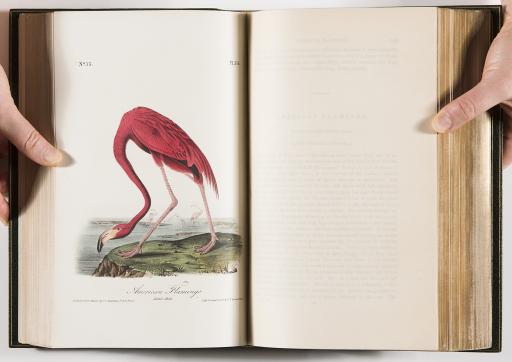


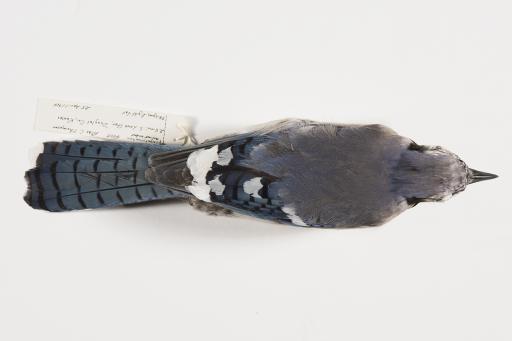
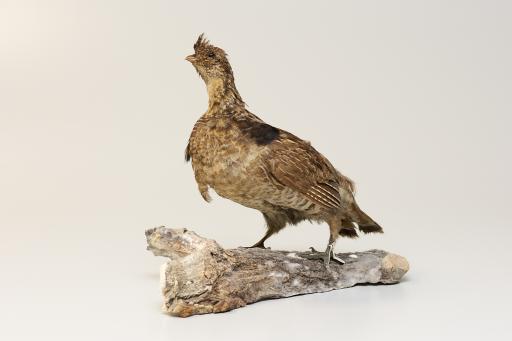
![Roe Lockwood & Son; Julius Bien; John James Audubon, Summer or Wood Duck, Anas sponsa [Aix sponsa]](https://sma-search-api.ku.edu/ea4208842c08996bda056e641cd793b4b74066379b42086fda0a837d677233f8/EL2020.011.jpg)